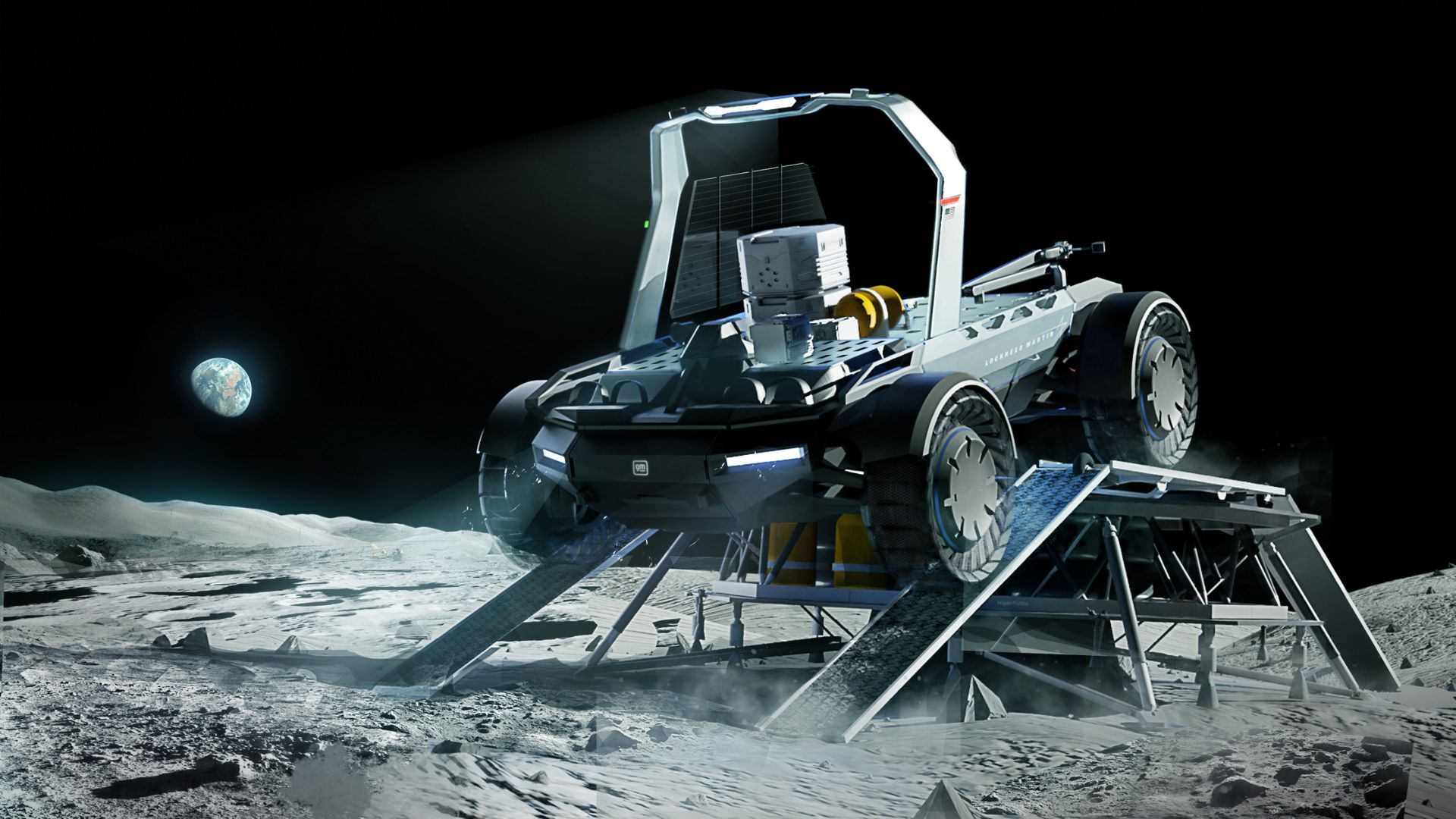

We may earn revenue from the products available on this page and participate in affiliate programs. Learn more ›
It became clear last May that GM was helping to develop NASA’s next moon rover, and that it might bear a resemblance to the GMC Hummer EV. With an announcement published this week, GM revealed that it is moving forward with its plans, bolstered by a virtual lunar surface environment for testing.
GM isn’t new to the space game. Back in the 1960s, the company partnered with Boeing to build three lunar roving vehicles (LRVs) that were used in missions in 1970 and 1971. The rovers remain on the moon, reminders of those first attempts. GM spokesman Stuart Fowle told CNN Business that the companies plan to have a brand-new vehicle ready by 2025, “new car smell and everything,” and The Jetsons‘ lifestyle is looking closer than ever.

There are no roads on the moon (yet) and GM has been trying out the rovers in an expensive simulator at GM’s testing lab. Using the Ultium vehicle platform and batteries with a Hummer EV as a launching point, the company made some discoveries that will make a big difference on the surface of the moon.
“We’ve created a kilometer by kilometer surface of the moon and we can drive around on that free-form,” said a GM representative on a video released Thursday. “Things that you would do to make a vehicle good in an off-road environment on Earth are the same things you would do on the moon. It’s just a shift in the numbers.”
Keeping moon dust at bay is key for these new rovers, because the dust spreads quickly and absorbs substantial heat from the sun. That means it could wreak havoc on the vehicle and the passengers’ spacesuits. During Apollo 15, a fender was ripped off the rover and it started to spray moon dust; the space explorers had to craft a new fender out of paper geological maps, duct tape, and two clamps from the optical alignment telescope. Nobody wants to go through that again.

“We started with the HUMMER EV’s chassis tuning as a baseline, and on the virtual moon the suspension didn’t even move. So, we knew immediately that we’d have to soften everything up,” said Jeff Vogt, GM advanced vehicle dynamics lead engineer, on the GM site. “And we learned pretty quickly that if you accelerate too hard to climb an incline, with lower gravity, you launch into space. Between that and dust mitigation, we know control systems will be vital to success.”
CNBC reported that the new rover is designed to last at least 10 years on the moon and will run at a top speed of 12 miles per hour. During the Apollo missions, the lunar rovers topped out at 7 mpg. While the news outlet reported that GM hopes to “strike deals with private companies such as Amazon founder Jeff Bezos’ Blue Origin and Elon Musk’s SpaceX,” the brand itself said that’s not the case.
“First, the intent is not to sell individual lunar vehicles to different entities,” said Fowle in an email to The Drive. “What would be sold is services/time with one central set of rovers versus multiple fleets owned by different space organizations. Second, the customer audience we have in mind is NASA-like space organizations internationally, not private companies like those CNBC mentioned. Basically, ‘commercial’ is meant to describe the business model, not the customer audience.”
GM and Lockheed have roughly two years to make this development project a fully-tested and vetted reality. Based on the speedy development GMC achieved for the Hummer EV, it could be well within the company’s reach to achieve its goal.
UPDATE (6/13/22 1:50 p.m. ET): A previous version of this article did not include the correct information about the sales demographics for the moon rovers, and it has been updated for accuracy. The Drive regrets the confusion.
Got a tip? Send it to kristin.shaw@thedrive.com.
